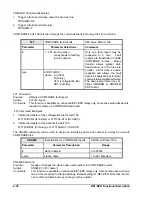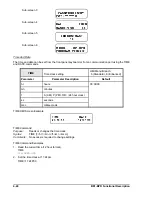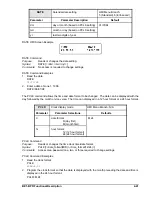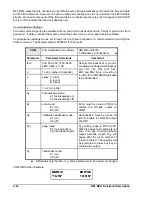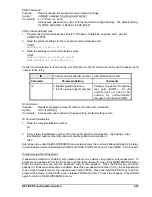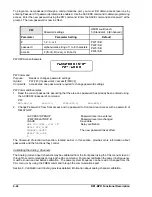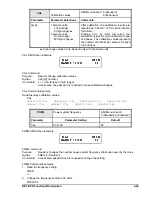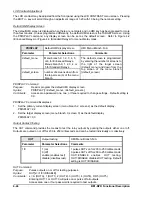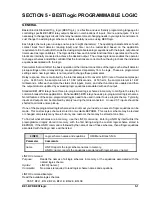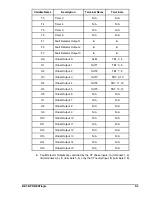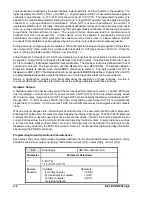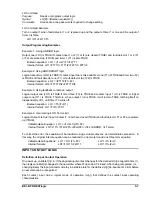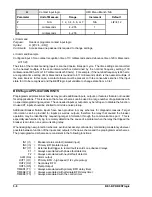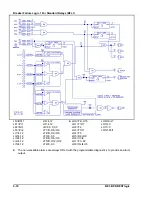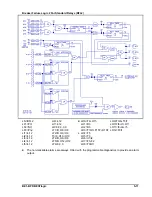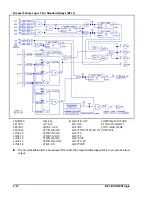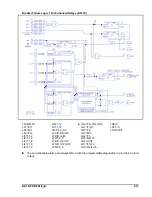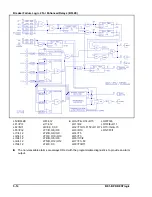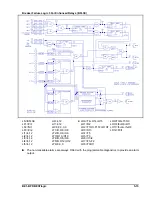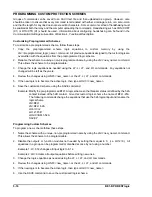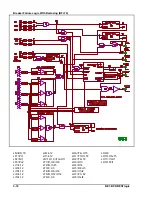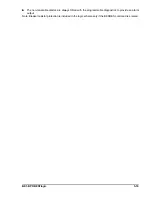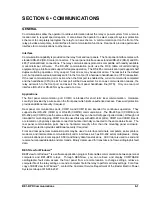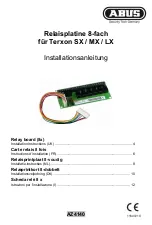
BE1-BPR BESTlogic
5-5
RELAY SETUP
LOGIC = BFL1
LOGIC NAMES
In order to easily identify the logic scheme that is operational in memory, each logic scheme is named. The
name is shown on the RELAY SETUP menu screen. For the custom logic scheme, the operator must enter
a name (a maximum of eight characters) identifying the logic scheme. When naming a custom logic scheme,
the standard logic scheme names can not be used. Only a unique name can be assigned to a custom logic
scheme. Custom logic schemes are programmed through the communication ports. Preprogrammed logic
schemes are selected through the front panel or the communication ports. A logic scheme is selected by
using the command LOGIC = <name> where <name> is the defined name of the logic scheme.
If a custom logic scheme is to be used, it is defined starting with the command LN = <name> where <name>
is the user selected name for the logic scheme.
To simplify making minor changes to an existing logic scheme, all logic equations for an existing scheme can
be copied over to the custom scheme by typing LN=<existing name>. Then the custom logic scheme must
be given a unique name by entering LN=<custom name>. Once the logic name is changed, the changes can
be made. (Changing the name does not affect the other logic definitions.) If changes are attempted prior
to changing the logic name, the relay will respond with an error message:
CUSTOM LOGIC NAME NOT
SELECTED
.
LN
Custom logic scheme
HMI Menu Branch: 1
Parameter
Range
Comments
existing name
1 to 8 characters
Defined name must be different from the
standard logic names. An existing logic
scheme can be copied into memory for
editing by using LN=<existing command>.
LN HMI Screen Example
LN Command
Purpose:
Read the name of the active logic or program a new set of logic equations called <name>.
Syntax:
LN[=<name>]
Comments:
An access area one password is required to change settings.
LN Command Example
Read the name of the active logic.
LN
BFL1
OUTPUT OPERATIONS
The BE1-BPR relay provides two types of outputs: virtual outputs and hardware outputs. The following
paragraphs provide information about the function and characteristics of virtual and hardware outputs.
Virtual Outputs
A virtual output exists only as a logical state inside the relay. Output operation for virtual outputs OA through
O12 is defined by boolean logic equations. Each variable in the equation corresponds to the current state
of an input, output, or timer. Any time a logic variable changes state, the outputs are reevaluated as TRUE
or FALSE. If a logical output corresponding to a physical output changes state, then the corresponding
output relay contact also changes state.
Summary of Contents for BE1-BPR
Page 31: ...BE1 BPR Application 2 17...
Page 42: ...3 4 BE1 BPR Human Machine Interface Figure 3 4 BE1 BPR Relay Vertical Mount Front View...
Page 43: ...BE1 BPR Human Machine Interface 3 5 Figure 3 5 BE1 BPR Relay Vertical Mount Rear View...
Page 49: ...4 6 BE1 BPR Functional Description Figure 4 2 Enhanced BE1 BPR Menu Display Screens...
Page 50: ...BE1 BPR Functional Description 4 7 Figure 4 3 Standard BE1 BPR Menu Display Screens...
Page 94: ...5 4 BE1 BPR BESTlogic Figure 5 1 BESTlogic Function Blocks...
Page 121: ...BE1 BPR Installation 7 3 Figure 7 3 Overall Dimensions Vertical Mount...
Page 122: ...7 4 BE1 BPR Installation Figure 7 4 Overall Dimensions Side View Vertical Mount...
Page 123: ...BE1 BPR Installation 7 5 Figure 7 5 Panel Drilling Diagram Vertical Mount...

